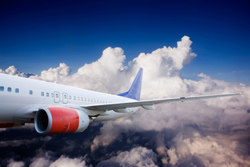Coating-enabled design of aircraft turbine engines
Increasing mileage in air transportation along with increasing pressure to reduce pollutant emissions impose high demands on the efficiency of modern gas turbine engines. Many research efforts have achieved constructive improvements, such as optimised aerodynamic design and higher bypass ratios leading to reduced fuel consumption. Further efficiency improvements can be expected by minimising clearance between the rotating blades and engine compressor housing. The SEAL-COAT project focused on abradable seal coatings that allow the blade tip to cut a track into the seal material without causing wear to the blade itself. By providing for self-adjusting clearance, the over-tip leakage of air in the compressor can be more optimally controlled. These coatings are being validated by using samples worn by the contact with a prototype blade rotating at a controlled speed and intrusion rate. More extensive analysis of the influence of coating properties and conditions during rig tests on the coatings' performance is conducted by means of computer codes. A widely used finite element (FE) code, ANSYS, was for this purpose used by project partners at the University of Technology of Belfort-Montbéliard. Both target and contact elements were employed to model the contact between the blade tip and abradable seal coating, as well as to estimate heat generated as energy dissipated by friction. One key aspect to the calculations was the input data for reference coatings, which included more than their elastic properties for coupling mechanical to thermal analyses. The modified consistency of coatings with roots in the thermal spray coating process posed another difficulty which was addressed. Experimental measurements were used to validate the results of calculations in each studied case before a reliable starting point could be established for improved coating-enabled design of engine components.



